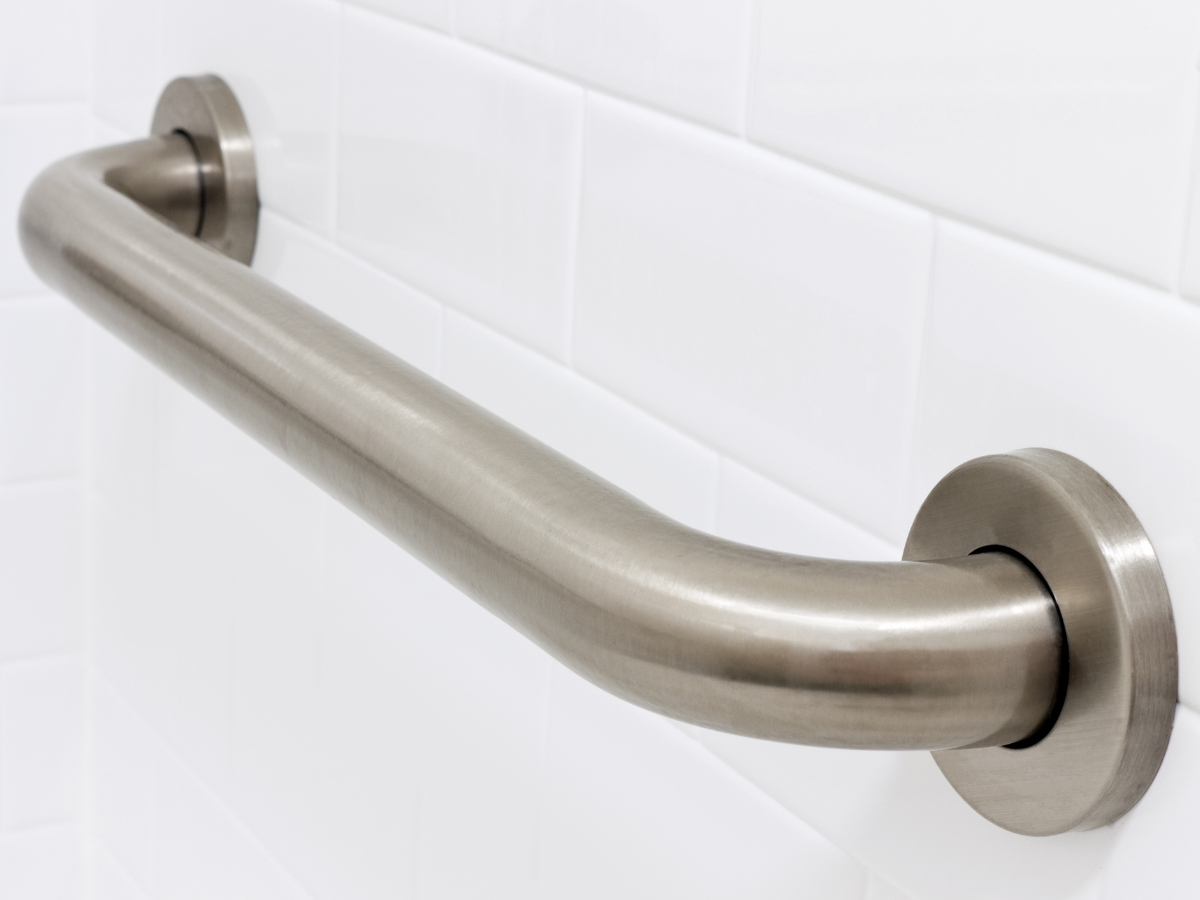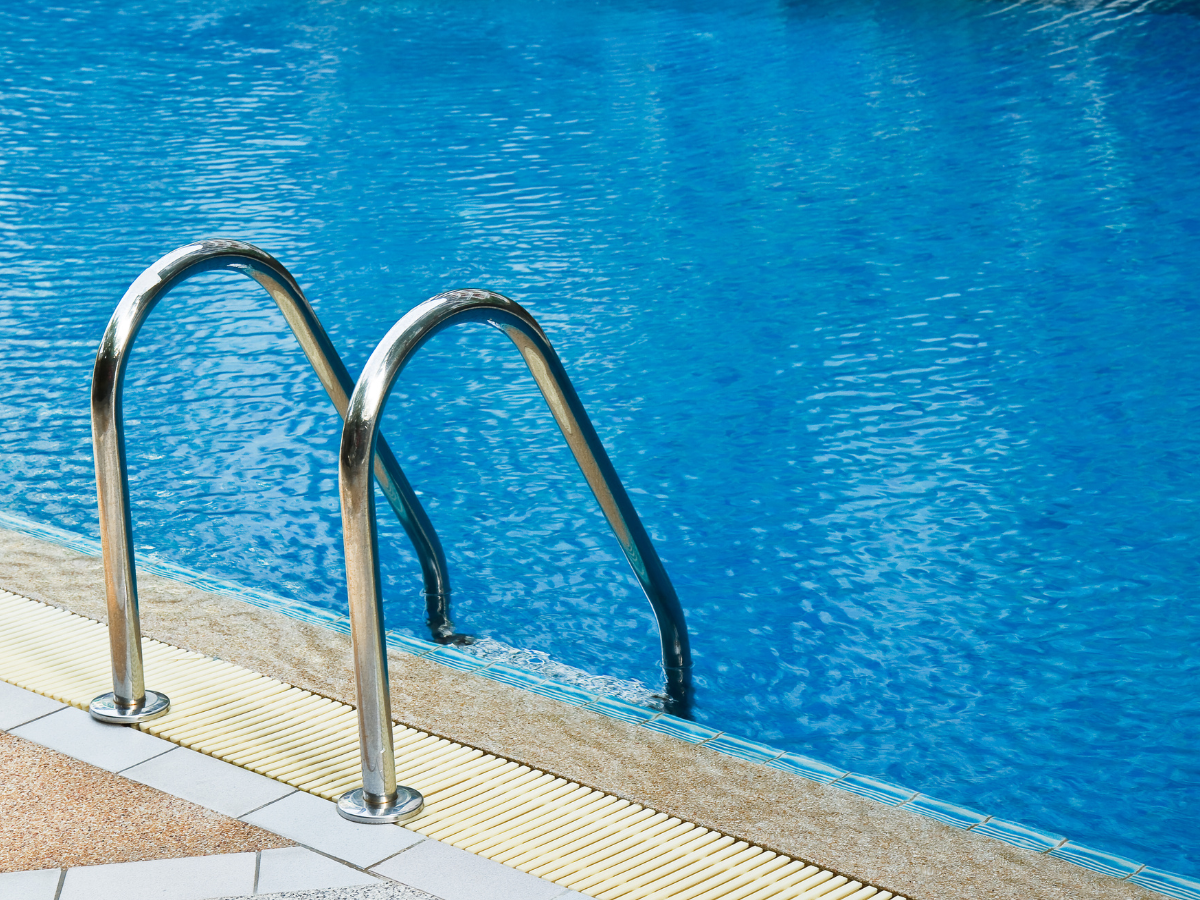Grab onto Something - Anything!
Maneuvering an able-bodied world is a challenge.
(Originally published on October 8, 2016) I have a problem, and I'm going to admit it freely because it's my own fault: I wish I had grab bars installed in my bathroom, and I'm only 41.
After having an emergency appendectomy this past Friday and recovering at home, it has been painful, especially when using the bathroom. I cannot—and this is getting personal—sit down or stand up from the toilet without holding onto something for dear life. And bathing and showering? Not a chance. I have a shallow bath, but my problem is, how on earth do I get in and out of my tub? So far, I have been getting into the tub with help, and I've been sitting on a milk crate to shower because standing for more than 3 minutes is not an option.
Two days post-surgery I can tell you this: You never really understand how valuable your core strength is until you can't use it for anything, even if it is for a few days or weeks.
Don't even get me started on trying to reach the bottom rack of the dishwasher.
A standard horizontal grab bar
Important terminology
So maybe it's time for a bit of master-level talk in order to better understand what I'm referencing. It helps to understand the terminology some design guidelines use. There are four principles of accessibility that we tend to use in interior design:
Aging In Place - is the principal that we design to never, ever have to move from our home.
Universal Design - is an idea that all design is accessible for seniors with mobility aids and for anyone with a mobility issue, but it goes much deeper than that. It is the right to access to a bathroom for regardless of ability, gender, physicality, and age types.
Barrier-free Design - pretty much Universal Design but focuses on the accessibility to living environments for humans with mobility aids and other physical limitations.
Adaptable Design - is the implementation of design solutions for universal accessibility in a barrier-free environment.
For my purposes, and selfishly so, I'm referring to Universal Design. Every home needs at least one bathroom with one grab bar in the shower, one grab bar at the toilet, and one seat for showering. You simply never know when you're going to need it.
Misconceptions about grab bars
The purpose of a grab bar is to assist the user with stability when standing, sitting, or stepping, and, in fact, you may already use one and probably did not know it. The following are the most common grab bars installed for safety and commonly found:
When you are getting in and out of a pool,
When holding a hand-rail while going up and down stairs, and
Holding onto the vertical pole in the bus to avoid losing your footing.
It is false that the most common injury in a home is a slip and fall in the bathroom, and, in fact, the World Health Organization’s data on falling and injuries states that the most common areas to fall are in the kitchen or garden.
A common misconception is that a grab bar is only for someone who is disabled or weak, such as a senior over 75 years old, but this could not be further from the truth. Grab bars are designed and installed to assist you, but they also help you otherwise maneuver in areas that tend to cause an injury in the home. Take this product line by HealthCraft (Ottawa, Canada) called the Invisa Collection. They are stylish and don't often look like grab bars, and they hold all the right weight loads that anyone can throw at them.
“You never know when an accidental injury (short or long term, or permanent) will occur and planning in advance with wall-blocking and installing grab bars is the best way to provide safety and security in a home.”
While it is true that a fall that requires hospitalization occurs every 30 minutes across North America, there are also many marginalized individuals who need grab bars but do not have reasonable access to them. This may be because of remote locations, low economic status, poverty, or even arrogance/ego, and I believe that this is deeply unfortunate.
Grab bars are used to get in and out of a pool
Preparing for the unknown
For most of us, a home is the single most expensive investment in our lives. So, as such, would it not be a benefit to plan in advance for the need of a grab bar? You might be thinking, "Yeah Corey, I don't want that in my house," but you couldn't be further from the heart of the issue.
What if:
You had surgery and needed support in the shower or toilet?
Injured any part of your body?
Have an accident and are using a mobility aid permanently?
You have a degraded eye prescription and can't visibly see much in the shower?
The point is, if you're considering a new bathroom or a renovated bathroom, always plan for the worst because you never know when you're going to need it. The added costs are minimal, the product is stylish, and any professional designer can guide you to the right solution for you.
Update: Six long years later…
It’s been six years since I originally wrote and published this article. It was based on my personal experience after surgery, but I could not have prepared for the challenges that I would face in the next five years.
My personal journey with accessibility changed my outlook
I had been running since I was 13 years old, and that includes races and competitions. This was not just my exercise; it was my zone and escape (more on this in a bit). A part of my recovery after the appendectomy in 2016 was getting my strength back. It took me 6 months to be able to lift my left knee up to a 90-degree position and balance on my right leg. I practiced every day, and I even strength trained.
Being a runner, I was very eager to get my shoes on and hit the trails again, and I was having some success. I was building intervals of one minute on and one minute off, starting at 20 minutes and increasing at five minutes on and one minute off to an extra five minutes for every additional minute (I hope that math makes sense to you). At the eight-minute interval and into a typical run around the Stanley Park Seawall, I turned the corner at the lighthouse under the Lions Gate Bridge and felt and heard several pops in my left knee area. At this moment, I had to make a choice: do I stop and fall over, needing an ambulance, or do I continue running to where I can call home for help and be picked up? I chose the latter.
What happened over the next several days and weeks was challenging because the injury was not going away. The typical R.I.C.E. method and physiotherapy were prescribed by my doctor, but after about nine months, I was getting worse and the pain in my knee was increasing. Obviously, my physical activity was restricted to whatever I could do with my upper body, swimming was incredibly painful, and then stairs began to be a problem.
Over the next year, I had ultrasounds, a 3 AM MRI, about 20 different X-rays, and a surgical consultation with the prescription of no running, no impact, and no jumping for the rest of my life. It was at this point that I began to walk with a cane. I did trigger-point injections and even had a small procedure to have viscous hyaluronic acid injected into my knee (the same material that they use for lip plumbing). This process took three years.
Since then, I have 98% recovered from my appendectomy and knee injury that caused me to to be in pain for over five years.
Turning the injury into a passion project, text book, and starting a revolution
My colleagues and clients might not realize that this personal experience drove my advocacy for accessibility and inclusivity. Designing an accessible space is not an afternoon trip to the local big box store because their options are limited and their understanding of accessible spaces is limited. This is usually a personal journey for a client, and it has very specific targets to achieve. In fact, this is one of the situations that inspired me to participate in a committee, and together we worked on publishing the 4th edition of the Kitchen and Bath Planning Guidelines with Support Spaces and Accessibility with new guidelines for interior designers and architects regarding accessible residential spaces.
This is not your average planning technical manual. It is in-depth and covers every situation in a home that has an accessible need. The other 11 Subject Matter Experts and I are extremely proud of this work.
Additional Resources
There are 5 articles that include case studies in this series, which I originally wrote in 2014. They cover all the accessibility considerations, from space planning to bathrooms and kitchens. I have included each of these articles at the bottom of the page, along with other resources you might need to consider. My motivation at the time was that there were no resources for me to do this type of work for this client. I self-published my case studies so that other design professionals might not have the same issues I had locating insight. So five years later, when I was working on this task force for the guidelines update, I saw fit to advocate for both an inclusive and accessible mandate to be added to them.
Written by Corey Klassen, CMKBD NCIDQ IIDA


